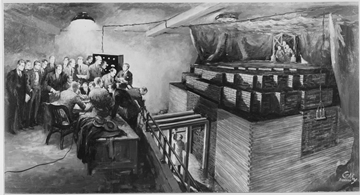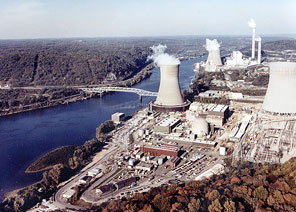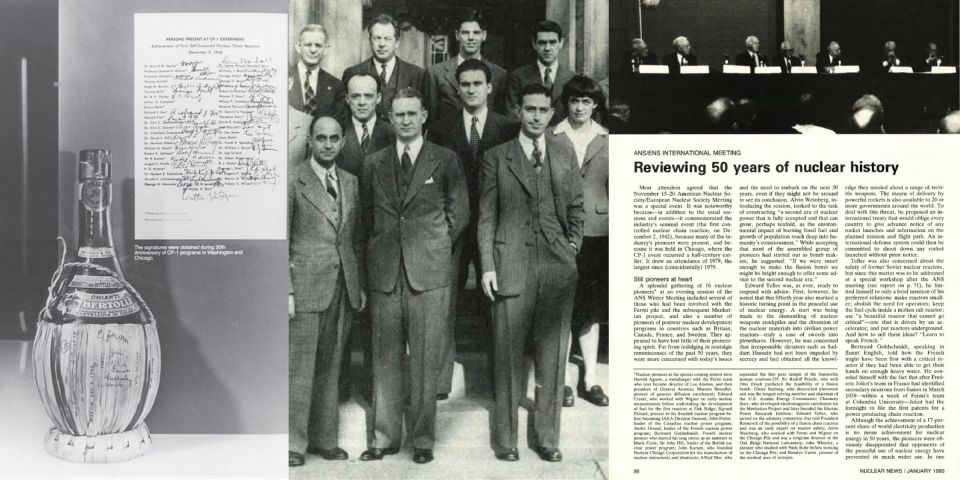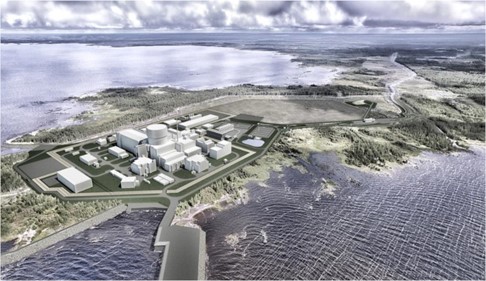Looking forward to next 70 years of atomic fission
This past weekend the world quietly marked the 70th anniversary of the initial criticality of CP-1 (Critical Pile 1), the 55th anniversary of the initial criticality of the Shippingport nuclear power plant, and the decommissioning of the USS Enterprise, a 51 year-old nuclear-powered aircraft carrier. Those events have put me into a reflective but incredibly optimistic mood.
 Imagine how exciting it must have been to be in the nuclear field in the early years. Talented engineers and scientists moved the technological needle from a basic pile of graphite bricks with uranium lumps, to full-scale power production, in machines that lasted for many decades, over a brief span of less than two decades. They accomplished that progress during a period when calculations were made with slide rules and modest-capacity computing devices that filled entire rooms, and when drawings were created by rooms full of people using hand tools. They overcame the disadvantage of having lost almost an entire decade (1946-1954) during which only the selected few could think nuclear thoughts without risking incarceration.
Imagine how exciting it must have been to be in the nuclear field in the early years. Talented engineers and scientists moved the technological needle from a basic pile of graphite bricks with uranium lumps, to full-scale power production, in machines that lasted for many decades, over a brief span of less than two decades. They accomplished that progress during a period when calculations were made with slide rules and modest-capacity computing devices that filled entire rooms, and when drawings were created by rooms full of people using hand tools. They overcame the disadvantage of having lost almost an entire decade (1946-1954) during which only the selected few could think nuclear thoughts without risking incarceration.
By 1990, the annual electricity production in the United States from steam plants-whose furnaces were heated using the controlled fission chain reaction that Fermi and his team had proven-exceeded the entire amount of electricity produced each year by all of the power plants that were operating in the United States in 1960. That commercial milestone occurred less than 50 years after the basic physical process was proven.
Unfortunate slow down
Even by then, however, the growth in nuclear energy production around the world was slowing down as a result of many factors, including an increasingly well-organized and well-funded movement expressly aimed at halting the use of nuclear energy. Nuclear technologists bear some of the blame for the loss of support; they (we) failed to explain why we're so darned excited about the possibilities offered by this fascinating new technology.
 We also failed to notice that there were a large number of rich and powerful people who were not enthusiastic about creating a power source that could approach a goal of being so inexpensive that no one would bother measuring how much was consumed each month. As a group, we were so happy to be working with a material that stored 2 million times as much energy per unit mass as the most energy-dense hydrocarbon fuels that we overlooked the fact that many people enjoy enormous benefits from selling hydrocarbon fuels. It is a great business to be in; anyone who bought fuel yesterday is likely to buy fuel again tomorrow.
We also failed to notice that there were a large number of rich and powerful people who were not enthusiastic about creating a power source that could approach a goal of being so inexpensive that no one would bother measuring how much was consumed each month. As a group, we were so happy to be working with a material that stored 2 million times as much energy per unit mass as the most energy-dense hydrocarbon fuels that we overlooked the fact that many people enjoy enormous benefits from selling hydrocarbon fuels. It is a great business to be in; anyone who bought fuel yesterday is likely to buy fuel again tomorrow.
People whose livelihoods depend on moving mass quantities of material from deep underground, through capital-intensive processing plants, and into furnaces and engines around the world, were not so terribly excited about the reality that Fermi had shown us-how we could use a material that allows a man with a backpack to transport as much energy as a supertanker.
Listen to nuclear communicators
On December 2, 2012, I gathered a group of nuclear professionals who have taken on a shared avocation of communicating the wonders of atomic fission and the possibilities that its unique characteristics can provide. You can listen to that conversation at Atomic Show #191 - 70th Anniversary of CP-1, the First Controlled Fission Chain Reaction.
We spoke about the magical simplicity of Fermi's design and about the fact that, unlike the enormously expensive and still elusive effort to harness controlled nuclear fusion, Fermi and his team could be supremely confident that their device would work on the first try. We spoke about how it would be possible for a group of high school students, given the proper materials, to build a working fission reactor that could be safely started and controlled.
We then discussed how incredible it might be if we could treat nuclear technology in a manner similar to the way that we have treated computer hardware and software technology. Kirk Sorensen, a forward-thinking nuclear technologist who is the co-founder of Flibe Energy, has given several talks to audiences in Silicon Valley, and always comes away energized by thinking about how far we could advance our energy production systems if we adopted some of the knowledge-sharing principles that pervade the Valley.
I've had that experience one time at a Google Tech Talk; it may be time to make that trip again, to help increase support for the truly exciting developments in small modular reactor development that are happening in a number of places in the United States.

Shippingport Atomic Power Station
Though we were all in agreement that we could be doing far more with nuclear energy than we are today, we were not the first people to recognize just how wonderful it was that people had learned how to access atomic energy. Here is a quote from President Eisenhower's famous Atoms for Peace speech to the United Nations, given on December 8, 1953.
The United States knows that if the fearful trend of atomic military build-up can be reversed, this greatest of destructive forces can be developed into a great boon, for the benefit of all mankind. The United States knows that peaceful power from atomic energy is no dream of the future. The capability, already proved, is here today. Who can doubt that, if the entire body of the world's scientists and engineers had adequate amounts of fissionable material with which to test and develop their ideas, this capability would rapidly be transformed into universal, efficient and economic usage?To hasten the day when fear of the atom will begin to disappear from the minds of the people and the governments of the East and West, there are certain steps that can be taken now.
...
To the making of these fateful decisions, the United States pledges before you, and therefore before the world, its determination to help solve the fearful atomic dilemma-to devote its entire heart and mind to finding the way by which the miraculous inventiveness of man shall not be dedicated to his death, but consecrated to his life.
(Emphasis added.)
That is the vision that keeps me moving forward. I share it as often as I can on whatever pulpits I am offered.
Solving the trilemma
Along with the material endowment provided by nature (God, if you prefer), nuclear knowledgeable people have in their minds the capability that will help to solve what the World Energy Council describes in a recent series of reports as a "trilemma".
.. simultaneously address energy security, universal access to affordable energy services, and environmentally-sensitive production and use of energy is one of the most formidable challenges facing governments-indeed some might argue that it is the most formidable, or even the most important. The World Energy Trilemma report, now in its fourth year, aims to help governments rise to the challenge of tackling this 'trilemma'.
_________________________________

Adams
Rod Adams is a nuclear advocate with extensive small nuclear plant operating experience. Adams is a former engineer officer, USS Von Steuben. He is the host and producer of The Atomic Show Podcast. Adams has been an ANS member since 2005. He writes about nuclear technology at his own blog, Atomic Insights.






